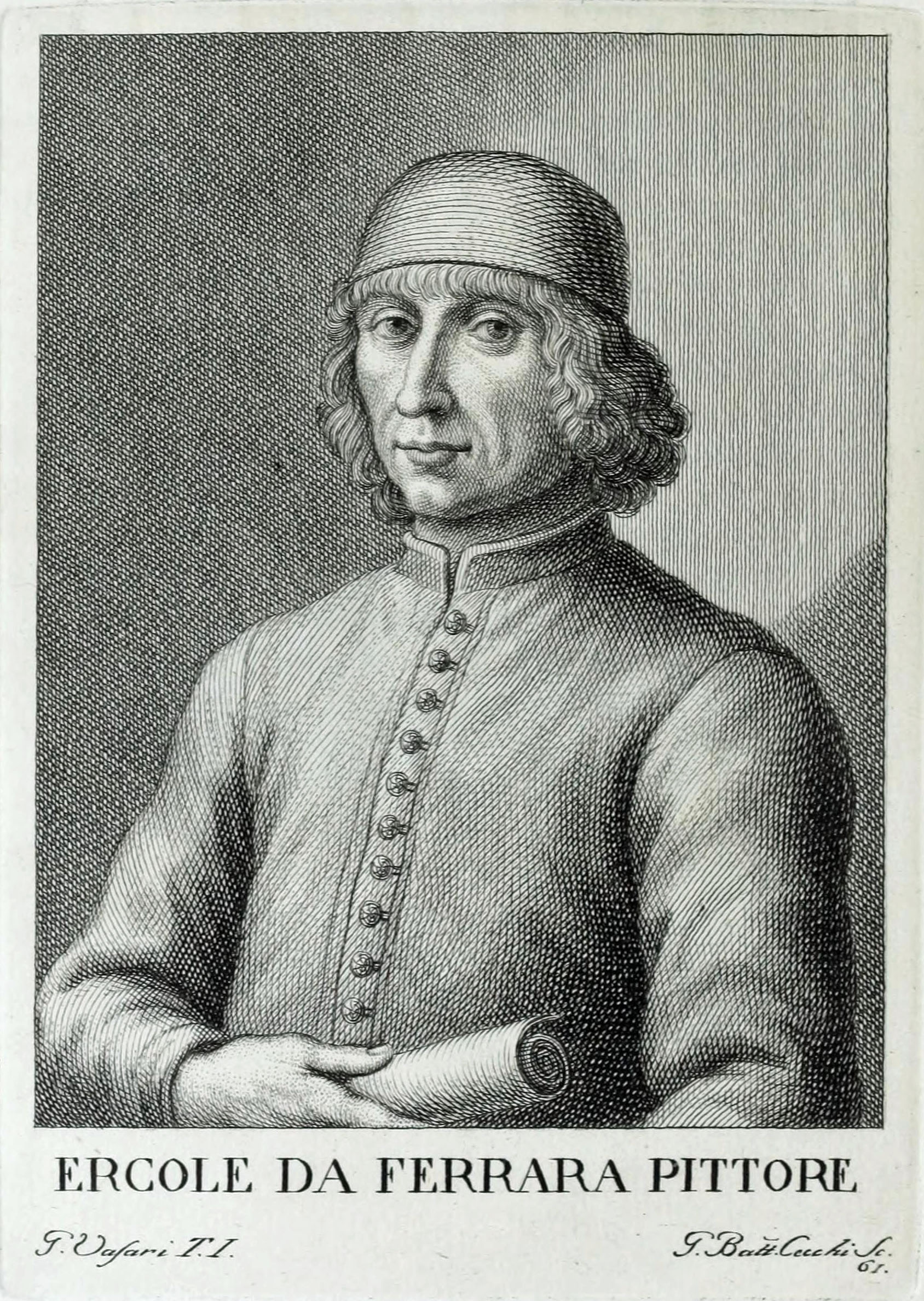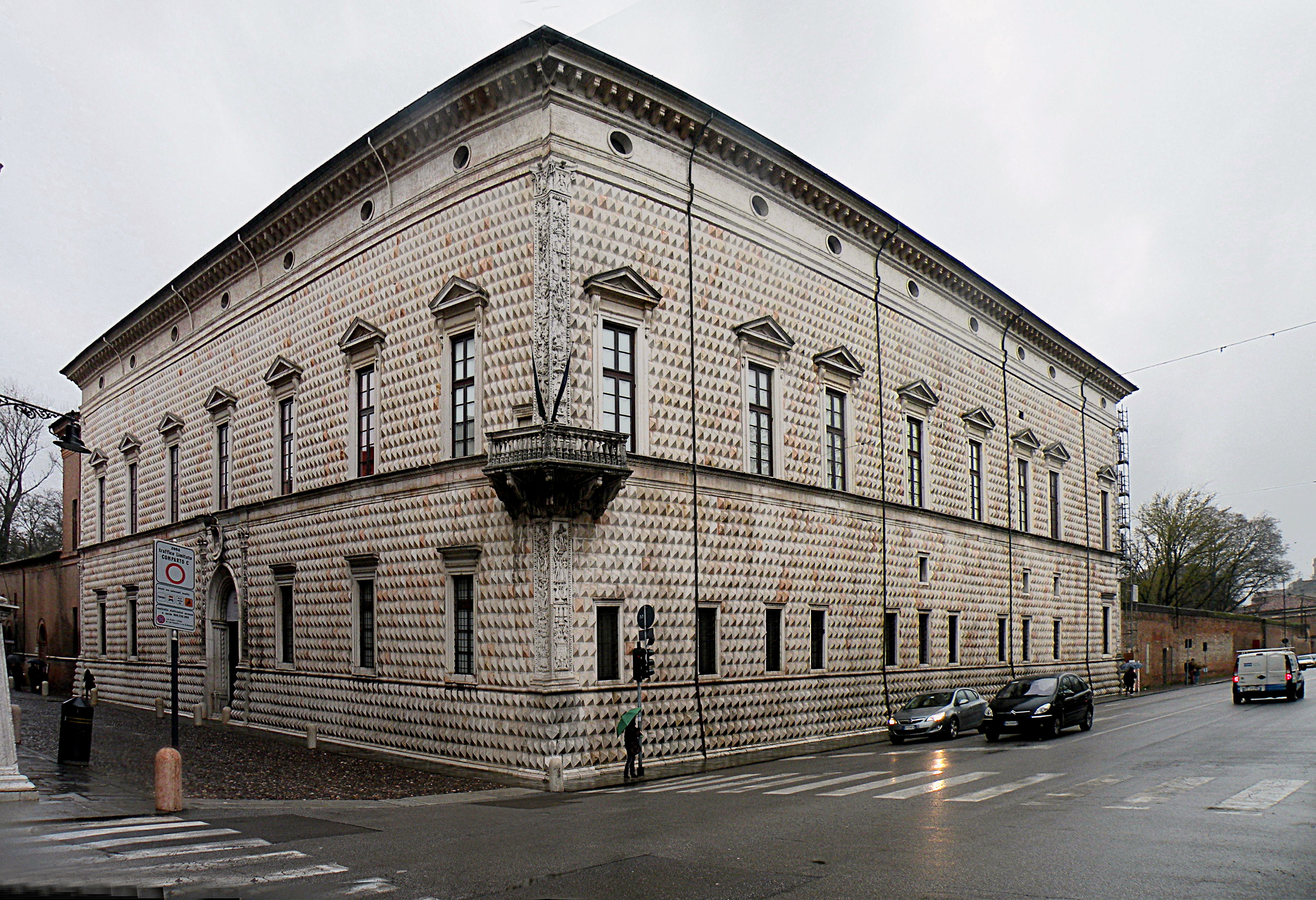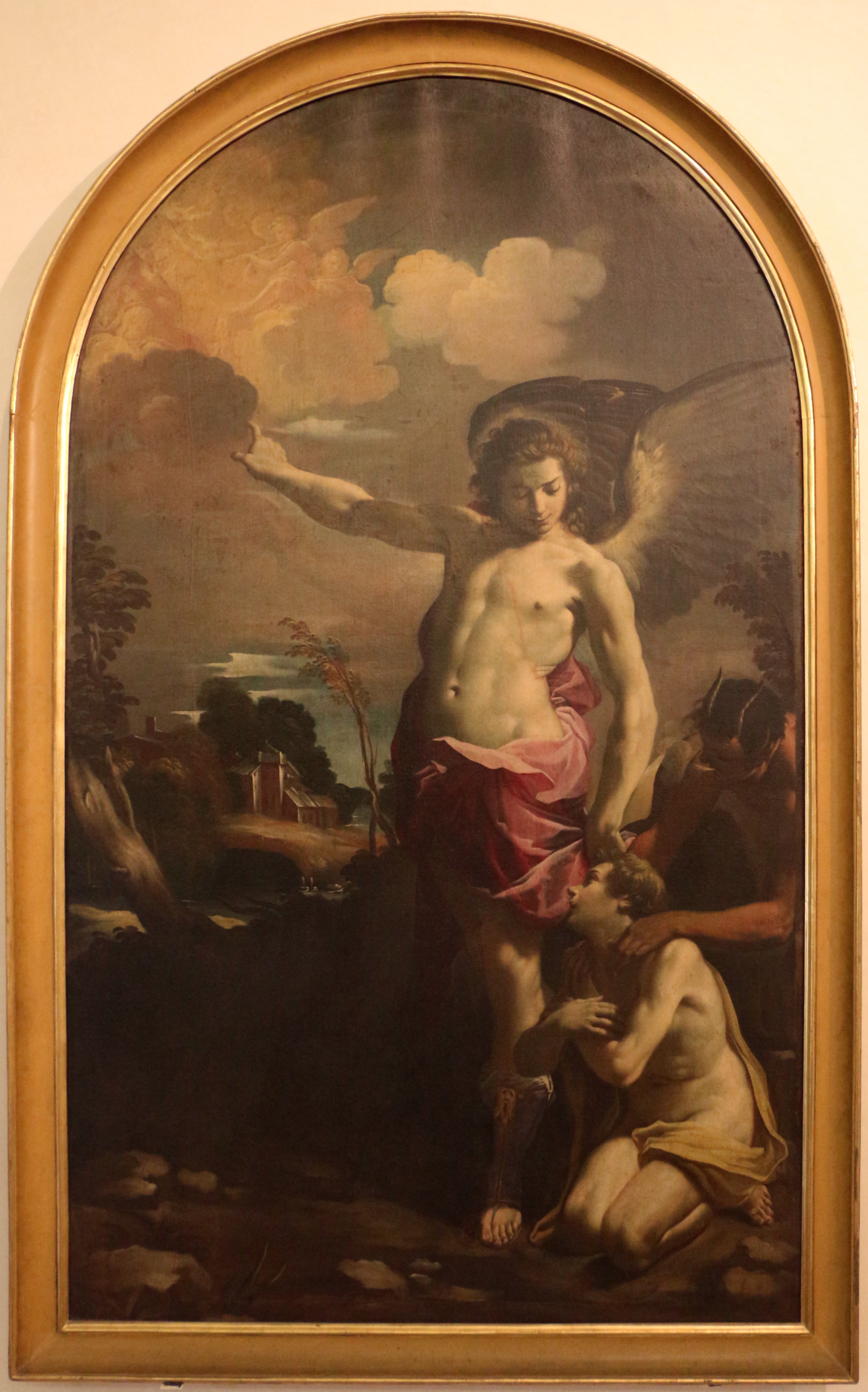|
Santa Maria In Vado
Santa Maria in Vado is a church located on Via Borgovado number 3 in Ferrara, Region of Emilia-Romagna, Italy. History The church derives its name from a guado or fording (''vado'' in dialect) that was located nearby. A church at the site was documented since the tenth century, but on Easter of 1171, a eucharistic miracle occurred when blood spouted from the host during consecration. This made the church an object of pilgrimage. This miracle that appears to confirm transubstantiation resembles the subsequent events depicted in ''The Mass at Bolsena ''by Raphael. Reconstruction was started in 1495 under the patronage of Ercole de' Roberti under the designs of Biagio Rossetti. The church contains paintings by Carlo Bononi, Camillo Filippi, Prospero Fontana Prospero Fontana (1512–1597) was a Bolognese painter of late Renaissance and Mannerist art. He is perhaps best known for his frescoes and architectural detailing. The speed in which he completed paintings earned him co ... [...More Info...] [...Related Items...] OR: [Wikipedia] [Google] [Baidu] |
Ferrara
Ferrara (, ; egl, Fràra ) is a city and ''comune'' in Emilia-Romagna, northern Italy, capital of the Province of Ferrara. it had 132,009 inhabitants. It is situated northeast of Bologna, on the Po di Volano, a branch channel of the main stream of the Po River, located north. The town has broad streets and numerous palaces dating from the Renaissance, when it hosted the court of the House of Este. For its beauty and cultural importance, it has been designated by UNESCO as a World Heritage Site. History Antiquity and Middle Ages The first documented settlements in the area of the present-day Province of Ferrara date from the 6th century BC. The ruins of the Etruscan town of Spina, established along the lagoons at the ancient mouth of Po river, were lost until modern times, when drainage schemes in the Valli di Comacchio marshes in 1922 first officially revealed a necropolis with over 4,000 tombs, evidence of a population centre that in Antiquity must have played a major rol ... [...More Info...] [...Related Items...] OR: [Wikipedia] [Google] [Baidu] |
Roman Catholic
Roman or Romans most often refers to: *Rome, the capital city of Italy *Ancient Rome, Roman civilization from 8th century BC to 5th century AD *Roman people, the people of ancient Rome *'' Epistle to the Romans'', shortened to ''Romans'', a letter in the New Testament of the Christian Bible Roman or Romans may also refer to: Arts and entertainment Music * Romans (band), a Japanese pop group * ''Roman'' (album), by Sound Horizon, 2006 * ''Roman'' (EP), by Teen Top, 2011 *" Roman (My Dear Boy)", a 2004 single by Morning Musume Film and television * Film Roman, an American animation studio * ''Roman'' (film), a 2006 American suspense-horror film * ''Romans'' (2013 film), an Indian Malayalam comedy film * ''Romans'' (2017 film), a British drama film * ''The Romans'' (''Doctor Who''), a serial in British TV series People *Roman (given name), a given name, including a list of people and fictional characters *Roman (surname), including a list of people named Roman or Romans *Ῥωμ� ... [...More Info...] [...Related Items...] OR: [Wikipedia] [Google] [Baidu] |
Province Of Ferrara
The province of Ferrara ( it, provincia di Ferrara; egl, pruvîncia ad Fràra) is a province in the region of Emilia-Romagna, Italy. Its provincial capital is the city Ferrara. As of 2016, it has a population of 354,238 inhabitants over an area of . It contains 23 '' comuni'', listed at list of communes of the Province of Ferrara. Its president is Barbara Paron. History The province of Ferrara is believed to have been first settled in by the Romans at the site "Forum Alieni", although remains of the coastal port of Spina have been unearthed near Comacchio by archaeologists. Ferrara was first mentioned when it was conquered by Germanic tribe the Lombards in 753 CE, and the Byzantine Empire lost its rule over the city. It was gifted to the Holy See by the Franks in either 754 or 756 CE, and was led by the Bishops of Ravenna. Benedictine and Cistercian monasteries started reclaiming Podeltan lands in the 9th century. In 1055, the partially independent town of Fererra was given im ... [...More Info...] [...Related Items...] OR: [Wikipedia] [Google] [Baidu] |
Emilia-Romagna
egl, Emigliàn (man) egl, Emiglièna (woman) rgn, Rumagnòl (man) rgn, Rumagnòla (woman) it, Emiliano (man) it, Emiliana (woman) or it, Romagnolo (man) it, Romagnola (woman) , population_note = , population_blank1_title = , population_blank1 = , demographics_type1 = , demographics1_footnotes = , demographics1_title1 = , demographics1_info1 = , demographics1_title2 = , demographics1_info2 = , demographics1_title3 = , demographics1_info3 = , timezone1 = CET , utc_offset1 = +1 , timezone1_DST = CEST , utc_offset1_DST = +2 , postal_code_type = , postal_code = , area_code_type = ISO 3166 code , area_code = IT-45 , blank_name_sec1 = GDP (nominal) , blank_info_se ... [...More Info...] [...Related Items...] OR: [Wikipedia] [Google] [Baidu] |
Eucharistic Miracle
In Christianity, a Eucharistic miracle is any miracle involving the Eucharist. The Roman Catholic, Lutheran, Eastern Orthodox, Methodist, Anglican and Oriental Orthodox Churches belief that Christ is really made manifest in the Eucharist and deem this a Eucharistic miracle; however, this is to be distinguished from other manifestations of God. The Catholic Church distinguishes between divine revelation, such as the Eucharist, and private revelation, such as Eucharistic miracles. In general, reported Eucharistic miracles usually consist of unexplainable phenomena such as consecrated Hosts visibly transforming into myocardium tissue, being preserved for extremely long stretches of time, surviving being thrown into fire, bleeding, or even sustaining people for decades. Verification of Eucharistic miracles often depends on the religious branch reporting the supposed miracle, but in the case of the Catholic Church, a special task-force or commission investigates supposed Eucharistic m ... [...More Info...] [...Related Items...] OR: [Wikipedia] [Google] [Baidu] |
Transubstantiation
Transubstantiation (Latin: ''transubstantiatio''; Greek: μετουσίωσις ''metousiosis'') is, according to the teaching of the Catholic Church, "the change of the whole substance of bread into the substance of the Body of Christ and of the whole substance of wine into the substance of the Blood of Christ". This change is brought about in the eucharistic prayer through the efficacy of the word of Christ and by the action of the Holy Spirit. However, "the outward characteristics of bread and wine, that is the 'eucharistic species', remain unaltered". In this teaching, the notions of "substance" and "transubstantiation" are not linked with any particular theory of metaphysics. The Roman Catholic Church teaches that, in the Eucharistic offering, bread and wine are changed into the body and blood of Christ. The affirmation of this doctrine was expressed, using the word "transubstantiate", by the Fourth Council of the Lateran in 1215. It was later challenged by various 14th-cen ... [...More Info...] [...Related Items...] OR: [Wikipedia] [Google] [Baidu] |
The Mass At Bolsena
''The Mass at Bolsena'' is a painting by the Italian renaissance artist Raphael. It was painted between 1512 and 1514 as part of Raphael's commission to decorate with frescoes the rooms that are now known as the Raphael Rooms, in the Apostolic Palace in the Vatican. It is located in the ''Stanza di Eliodoro'', which is named after ''The Expulsion of Heliodorus from the Temple''. ''The Mass at Bolsena'' depicts a Eucharistic miracle that is said to have taken place in 1263 at the church of Santa Cristina in Bolsena. A Bohemian priest who doubted the doctrine of transubstantiation was celebrating mass at Bolsena, when the bread of the eucharist began to bleed. The blood that spouted from the host fell onto the tablecloth in the shape of a cross and he was reconverted. The following year, in 1264, Pope Urban IV instituted the Feast of Corpus Christi to celebrate this miraculous event. The blood stained Corporal of Bolsena is still venerated as a major relic in the Orvieto Cathedral ... [...More Info...] [...Related Items...] OR: [Wikipedia] [Google] [Baidu] |
Ercole De' Roberti
Ercole de' Roberti (c. 1451 – 1496), also known as Ercole Ferrarese or Ercole da Ferrara, was an Italian artist of the Early Renaissance and the School of Ferrara. He was profiled in Vasari's ''Le Vite delle più eccellenti pittori, scultori, ed architettori''. __NOTOC__ The son of the doorkeeper at the Este castle, Ercole later held the position of court artist for the Este family in Ferrara. According to Vasari: Paintings by Ercole are rare. His life was short and many of his works have been destroyed. Works By 1473, Ercole had left Ferrara and was working in Bologna in the studio of Francesco del Cossa. According to Vasari, Ercole also apprenticed under Lorenzo Costa in Bologna, but this seems unlikely as he was Lorenzo's senior by several years. Vasari was likely confusing him with Ercole da Bologna or Ercole Banci. Ercole's first mature works are his contributions to the Griffoni Chapel for the San Petronio Basilica in Bologna: a predella depicting the '' Mira ... [...More Info...] [...Related Items...] OR: [Wikipedia] [Google] [Baidu] |
Biagio Rossetti
Biagio Rossetti ( 1447 – 1516) was an Italian architect and urbanist from Ferrara. A military engineer since 1483, and the ducal architect of Ercole I d'Este, in 1492 Rossetti was assigned the project of enlarging the city of Ferrara. Rossetti is considered the first architect in the history of urbanistics to make use of the advantages of the modern methods: balancing the humanistic principles in architecture, the real needs of the city, and local traditions. Beginning in 1492, he projected and directed construction of the defense walls around the city. The Diamond Palace is perhaps the most famous of his buildings. After Ercole's death in 1505, Rossetti served the Cardinal Ippolito d'Este, in which role he was responsible for the creation of many notable palazzi and church Church may refer to: Religion * Church (building), a building for Christian religious activities * Church (congregation), a local congregation of a Christian denomination * Church service, a form ... [...More Info...] [...Related Items...] OR: [Wikipedia] [Google] [Baidu] |
Carlo Bononi
Carlo Bononi (1569? - 1632) was an Italian painter. From an 1876 book: '' Giulio Cromer, Carlo Bononi a pupil of Bastaruolo, and Alfonso Rivarola or Chenda, were the last artists of any eminence in Ferrara.'' Page 175 Biography Born and active mainly in Emilia and Ferrara, and considered to be mainly a painter of the School of Ferrara. He studied painting under Giuseppe Mazzuoli, known as ''il Bastarolo''. He knew Guercino and was eulogized by Guido Reni as having a "bounty of a most honest life, a great knowledge of design, and strength in colorizing". Bononi rose to prominence in Ferrara when the painter Scarsellino died, and the former called to Rome. He was initially buried in Santa Maria in Vado, for which he had helped decorate the ceiling with various canvases. Among his pupils were Alfonso Rivarola (il Chenda), Giovanni Battista dalla Torre, and Camillo Berlinghieri. His nephew, Leonello Bononi was also a painter. An important exhibition has been held at Pa ... [...More Info...] [...Related Items...] OR: [Wikipedia] [Google] [Baidu] |
Camillo Filippi
Camillo Filippi (died 1574) was an Italian painter who flourished about the middle of the 16th century. Biography Filippo was born in Ferrara. He was a disciple of Dosso Dossi, and painted historical works with some success. The ''Annunciation'' in the choir of the church of Santa Maria in Vado at Ferrara is attributed to Filippo; as is the ''Trinity'' in the Church of the Jesuits. He painted for the fresco cycle of Oratorio dell'Annunziata, Ferrara. His death took place in 1574. His son, Sebastiano Filippi (Il Bastianino), became a prominent local painter. His younger son Cesare Filippi was also a painter. Volume 1; author Cesare Cittadella; published by Francesco Pomatelli in Ferrara, 1782, Page 114-119. Not ...
|
Prospero Fontana
Prospero Fontana (1512–1597) was a Bolognese painter of late Renaissance and Mannerist art. He is perhaps best known for his frescoes and architectural detailing. The speed in which he completed paintings earned him commissions where he worked with other prominent artists of the period. He was a prominent figure in the city of Bologna, serving as official arbitrator in the business disputes of local artists. In his later career Fontana trained younger painters, including his own daughter Lavinia. Professional life Prospero Fontana was likely taught by Innocenzo da Imola, but there is a degree of uncertainty surrounding the relationship between the two men. As a teenager, Fontana was an assistant on Perino del Vaga's Palazzo Doria in Genoa. However, art historians cannot definitively identity Fontana's contributions to the decorations. In the 1550s, Fontana painted Pope Julius III's portrait and was pensioned at the pontifical court. He also decorated the Palazzo di Firenz ... [...More Info...] [...Related Items...] OR: [Wikipedia] [Google] [Baidu] |






